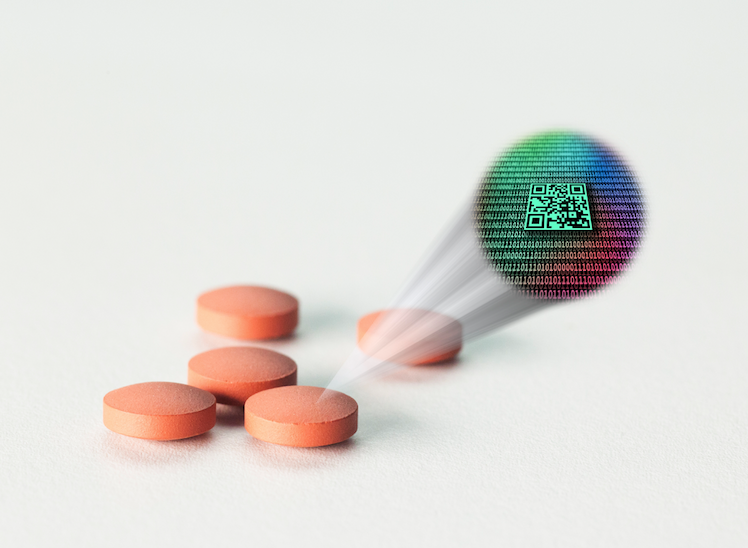Edible Barcode Expands Applications with New Handheld Reader
TruTag’s edible barcodes are part of the product itself, including products like food and dietary supplements.
Photo from TruTag Technologies Inc.

With a new, handheld optical reader, product authentication company TruTag Technologies Inc. (Kapolei, HI) says it is expanding the scope for which its edible barcodes can be used.
As opposed to security measures like universal product codes (UPC) or radio-frequency identification (RFID) that are used on a package to authenticate products, TruTag’s edible barcodes are part of the product itself, including products like food and dietary supplements. The dust-sized particles are made of silicon dioxide-“a well-known and trusted ingredient that has been used in food and medicine for decades”-and are incorporated directly into a drug, food, or dietary supplement; for instance, in a dietary supplement’s excipient or coating. These particles include a “spectral barcode” that can be read by an optical reader for authenticating everything from product authenticity to lot number and delivery/distribution history.
Over the years, the company has worked to make its optical readers more user-friendly. Recently, the company introduced a new handheld optical reader, Model 4100, that works faster, in a matter of seconds. “Powered by a simple-to-use, cloud-connected, first-of-its-kind, solid-state imaging and processing engine, the Model 4100 can authenticate in just a few seconds thousands of medicines, electronic components, industrial parts, packaged goods, and other items marked with TruTag microtags,” the company explained in a press release. It added that the new reader “broadens the scope of objects” that can be scanned.
TruTag’s COO Peter Wong tells Nutritional Outlook that, so far, drug firms are in talks with TruTag about its technology. “In the drug/supplements category, we are in various stages of confidential production pilots with manufacturers for their tableted products (both late-stage phase 3 drugs and medicines already on the market) because our microtags can easily ride in the film coatings. Just last year, we completed joint testing of our on-dose authentication solution with WuXi PharmTech, a leading open-access R&D capability and technology platform company serving the pharmaceutical, biotechnology, and medical device industries.”
Currently, the technology targets distribution and supply chain channels, but Wong says perhaps one day individual consumers can use it. “TruTag offers a valuable solution for brand owners to protect high-value goods from compromises due to channel diversion, counterfeiting, product returns, and recalls,” he says. “In the future, we hope to provide consumers the ability to authenticate products that affect their safety and wellness, but currently, our solution works within supply chains, manufacturing facilities, warehouse and logistics centers, industrial facilities, and [is] used by product security teams, returns processors, QC investors, and healthcare providers.”
Read more about how TruTag works in these other articles by Nutritional Outlook:
Eat This! Edible Barcode for Dietary Supplements, Food Wins Award
Eat This! Edible Barcode for Dietary Supplements, Food Wins Award - See more at: http://www.nutritionaloutlook.com/news/eat-edible-barcode-dietary-supplements-food-wins-award#sthash.BBg0kQDR.dpuf
Jennifer Grebow
Editor-in-Chief
Nutritional Outlook magazine
jennifer.grebow@ubm.com
HHS announces restructuring plans to consolidate divisions and downsize workforce
Published: March 27th 2025 | Updated: March 27th 2025According to the announcement, the restructuring will save taxpayers $1.8 billion per year by reducing the workforce by 10,000 full-time employees and consolidating the department’s 28 divisions into 15 new divisions.







